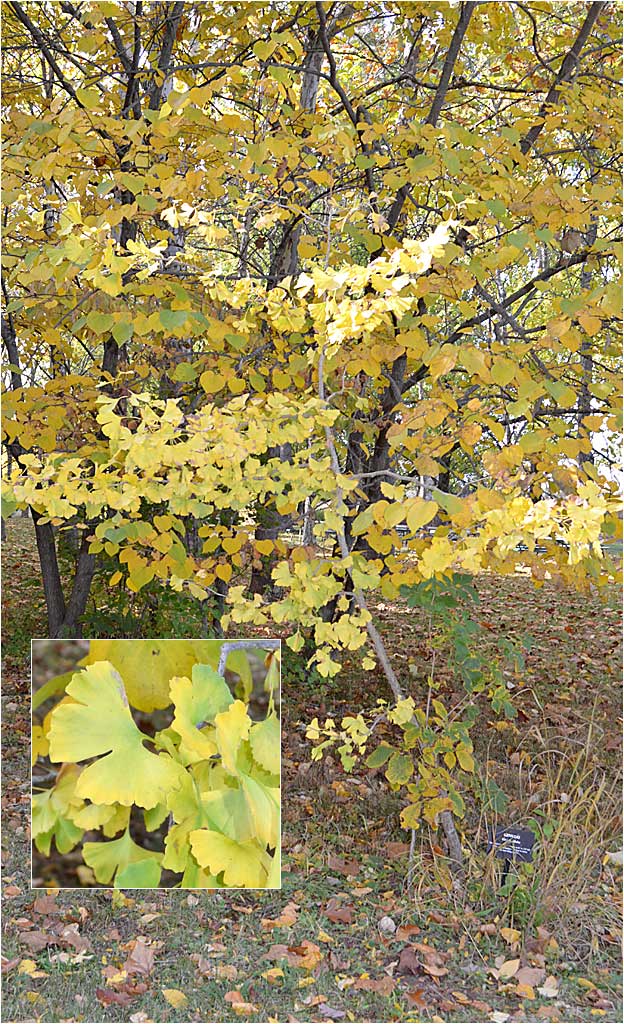37. GINKGO, Ginkgo biloba

Back in 2008, this Ginkgo was planted by Park Naturalist Douglas Jackson and it has grown very slowly over the last 15 years. It is still young enough not to bear any flowers - and as Ginkgos are dioecious (male and female flowers on separate trees) we do not even know if it is male or female. If ever a tree were to be given time, it would be the Gingko, for it is the last living species in its order (Ginkgoales). The order first appeared over 290 million years ago. They are also highly resistant to pollution and pests. Native to China.
GINKGO, FALL

In FALL, the Ginkgo will quickly turn from deep green to bright yellow in a short time. It may stay this color for a while, or (in the case of a hard frost) drop all of its leaves overnight. Yes, one day you wake up and there is a carpet of Ginkgo leaves under the tree. It gets its scientific name (biloba) because its striking leaf is cleft by a single lobe. Also called the Maidenhair Tree, the Ginkgo may live as long as 1,000 years and is the only tree known to have NO genes associated with aging.
LEAF BUD, PEGS

The Ginkgo's leaf bud (above left) will continue to generate new growth annually for the life of the tree. As they get older, the bud gets larger (PEG) and is a distinct visual ID of mature Ginkgos. As the leaf emerges (above right) the bud scale is discarded. The entire process from the side (above).
Gingkos are old and fascinating trees, and we shall learn more, and share more with you as this Gingko matures.